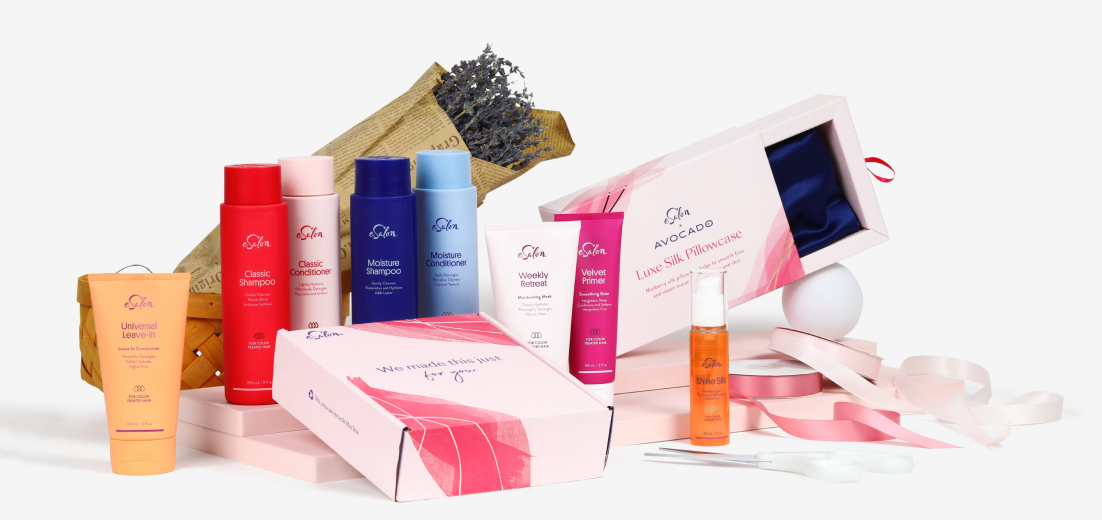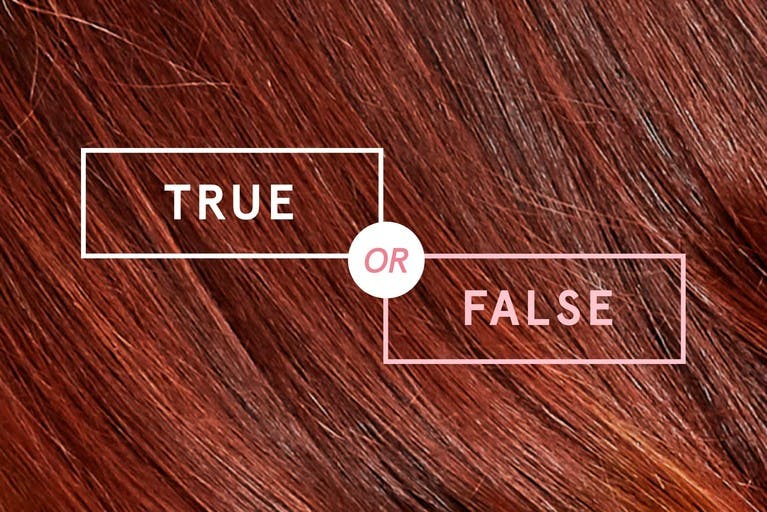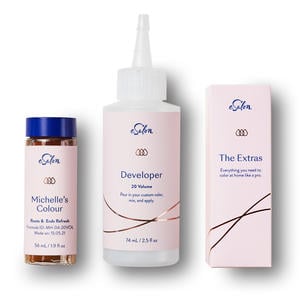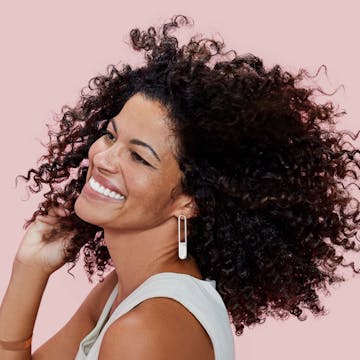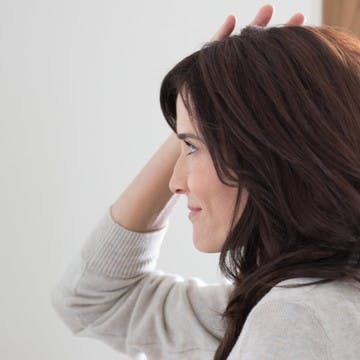10 Hair Color Myths: True or False?
Ever wonder why your hair looks naturally highlighted after a day at the beach or whether it really makes a difference to rinse with hot or cold water? In this article, our colorists break down the top hair color myths and truths. Ready to test your hair color knowledge? Let’s dive in.
01 Color cannot lift color. True
If you’ve previously colored your hair, you can’t lift (or in non-colorist speak, “lighten”) your color with hair dye alone. If you attempt to put another color on top, there’s simply no space left in that molecule! You first have to clear the molecule of color before you can fill it back up. That means to lighten already-colored hair, you’ll have to use bleach.
02 Ammonia alternatives are better for your hair. False
Ammonia is one chemical of many used in hair color. It’s been around for a very long time and works much more effectively than other ingredients. A lot of ammonia alternatives out there can actually be harsher on the scalp, cause irritation, and itchiness, and can even dry out or damage your hair. It’s popular to say “ammonia-free,” but that doesn’t necessarily mean it’s better for your hair.
What exactly does ammonia do? Ammonia opens up the hair’s cuticle so that the color can deposit effectively. Substitutes don't always open up the cuticle fully, so your color might not really “take” or last as long. You may be dying your hair more often than if you were to go with the ammonia-containing color. Bottom line: If used correctly, ammonia can actually be more beneficial for your hair than the substitutes. Plus, it is the best for total gray coverage.
03 Sulfate-free shampoos preserve your hair color. Mixed
Contrary to popular belief, there are good sulfates and not-so-good sulfates. Those not-so-good sulfates like sodium laureth sulfate and ammonium laureth sulfate are abrasives; so in an effort to get your hair squeaky clean (sometimes too clean), they can strip your hair color and natural oils. Other, diluted sulfates like cocamidopropyl hydroxysultaine, clean your hair gently while maintaining your shade. In a nutshell: always read the ingredient label, no matter how a shampoo is marketed, to make sure you’re buying the best care for your color.

04 Lemon juice lightens hair. True
It does. However, lemon juice itself does not lighten your hair––it’s the combination of lemon juice and sun exposure that speeds up the oxidation process, making your color lift slightly. Warning: You can’t really tell how light your hair is going to get, so going this route can mess up your shade. When you use something like lemon juice, you don’t fully know how much you’re applying and where potentially leaving your hair patchy and discolored. We recommend applying actual highlights, for a measured, results-guaranteed look.
05 Sunlight causes hair color to fade. True
When exposed to the sun, your hair color naturally oxidizes, which basically means that the sun opens up the hair’s cuticle, causing pigments to “fall out faster.” You can think of it as a natural bleaching by the sun. To keep your hair healthy and color vibrant in the sun, wear a hat during long beach days and don’t forget to layer on a heat protectant spray or serum like our Shine Silk. July and August are the months when the sun is at its strongest, so plan your beachwear accordingly to protect your hair.
06 Moisturizing your hair with oils like coconut or avocado oil causes color fade. False
Moisturizing your hair actually helps protect your hair color from fading. When your hair is dry, the follicles become brittle which leads to breakage and open cuticles that shed color. Leave-in conditioners, hair masks, and serums work to add an extra layer of protection for hair, making it soft and smooth. Oils specifically penetrate the hair’s cuticle and hydrate strands from the inside out, safeguarding your hair from drying out during the day. Coconut is a deeply-moisturizing oil that locks in lasting hydration, and avocado oil is known to soothe the scalp as well as strengthen hair. Moisturized hair takes color best when you’re ready to re-apply, so pick your favorite and hydrate away.
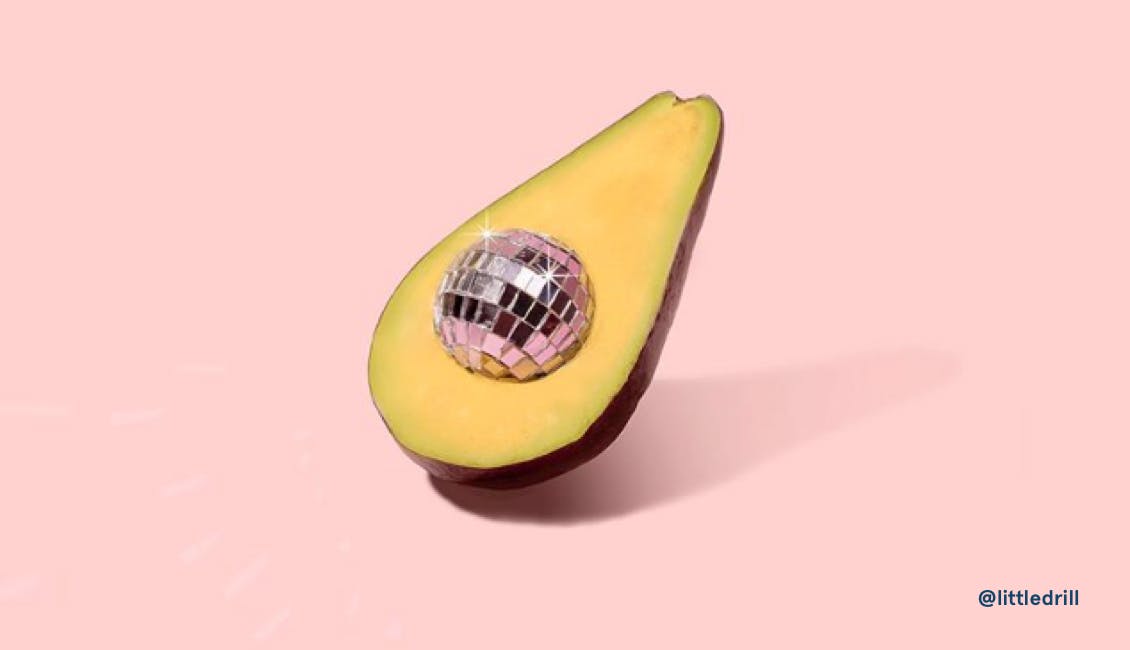
07 Using vaseline around your hairline guards your skin from hair color stains. True
Absolutely. In a pinch, applying a little Vaseline to your hairline is a great way to create a barrier to freshly-applied hair color. Vaseline is so thick and lubricated that it ensures the hair color won’t seep into the skin and create temporary stains. Vaseline can, however, clog pores and cause minor breakouts along your hairline if you have acne-prone skin. So make sure you’re ready with a warm cloth to wipe it away when you’re all done. Or use our Stain Guard, which is on the lighter side and created for sensitive skin.
08 The best way to get rid of grays is to pluck them. Mixed
Yes, while we advise against it, plucking grays is the best way to prevent it from growing back entirely, since the follicle eventually becomes damaged and stops producing hair altogether. But on the other hand, if you pluck every gray––and you’re 75% gray––that doesn’t leave you with much hair. A far easier (and less painful) approach to handling grays is to color them with a strong hair color formula, crafted for total gray coverage. So instead of hurting your hair follicles and potentially creating bald patches, stop gray hair in its tracks with color. Our permanent hair color does the trick of covering your grays completely.
09 Super-hot water strips hair color. True
Yes, hot water is robbing you of your hair color. Opening your bathroom door in a burst of steam is fun, but turn down the heat. Why? Hot water opens up the hair’s cuticle and causes the color to fall out of the hair. It’s not bad to shampoo your hair in warm water, but we suggest ending with a cold blast of water to close the cuticle and preserve your color (and even add shine). Rinsing with cool water also helps lock in moisture, so you get the most from your conditioning sessions.
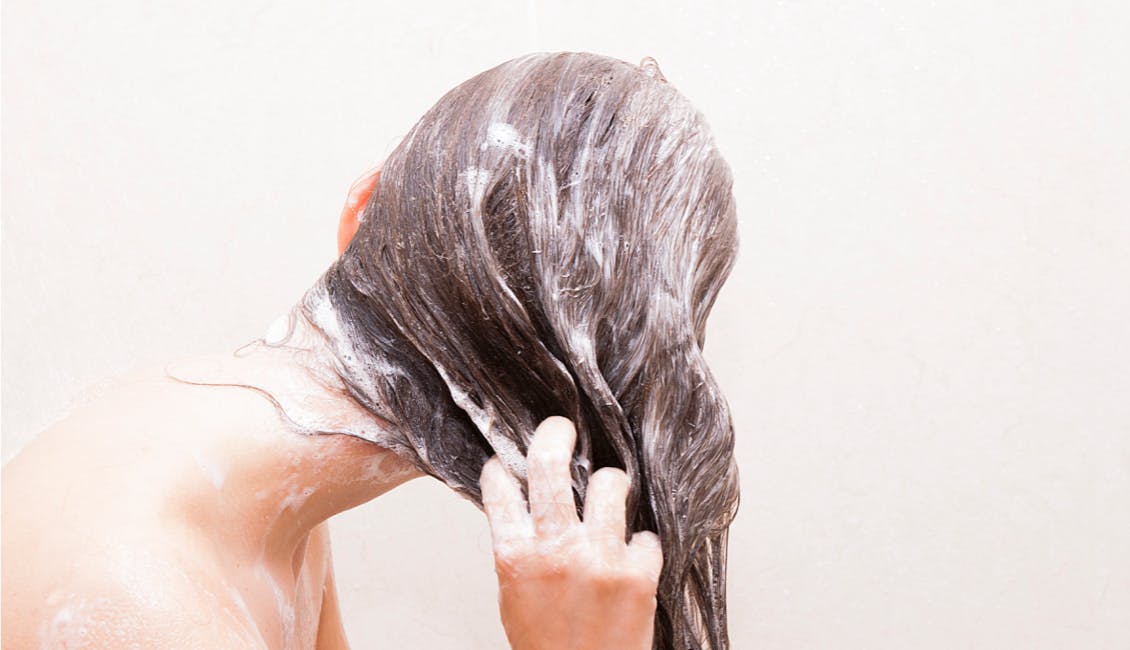
10 Semi-permanent and demi-permanent hair color are the same thing. False
They’re not the same thing. Demi-permanent is an ammonia-free hair color that requires a low-volume developer and fades gradually over the course of 24 washes. Demi doesn’t actually penetrate the hair’s cuticle, so that you won’t see any lines of regrowth or demarcation; so if you’re looking to test out a few shades, demi is your go-to choice. Semi-permanent hair color is super-super temporary and only stains the hair for about 3 to 6 washes––no developer required––much like our shampoo-in Tint Rinse.
Have more hair color questions or myths for us to prove or debunk? You can find us on Facebook, Instagram, Pinterest, and Twitter. And if you're looking for a new shade, try our custom hair color here.
